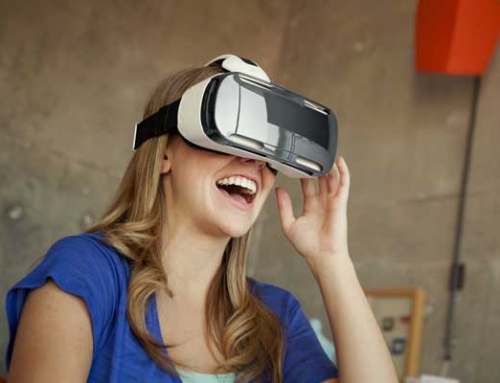How tech is changing the way we buy and sell a home
How tech is changing the way we buy and sell a home

Virtual reality is no longer associated with just gaming. The real-estate industry is adopting this evolving technology to help you buy and sell your home in ways never before possible.
Say you’re moving to another state, or you’re interested in buying new construction and your home hasn’t been built. You can take a virtual tour of your future home without leaving the comfort of the one you live in now.
How does it work?
“Real estate is probably the only asset class that is experiential and trades in emotion,” says Steven Giles, a broker with Douglas Elliman Real Estate in New York. “I think virtual reality technology has greatly enhanced that experience.” Giles says that in competitive markets, it’s especially helpful for sellers to have access to the latest technology.
San Francisco-based Matterport is one of several media technology companies offering brokers, real-estate agents and service providers 3-D cameras to capture a home’s interior. Matterport stitches the images together to provide a walk-through that uploads onto a cloud service. You can view the property as a 3-D model using your smartphone, tablet, computer or virtual reality headset.
Virtual reality tours are a good way to reduce the number of physical home walk-throughs you have to make because they help you narrow down your search, Brown says. He’s seen buyers arrive at the first open house ready to make an offer because they’ve already done a virtual walk-through. “It just builds momentum around the transaction much more quickly.”
Real estate media company Circle Visions, also based in San Francisco, is working on another use of the technology: creating properties that don’t yet exist. People who are building their own home or remodeling their current one can use virtual reality headsets to get a sense of what the property will look like once it’s completed.
“When you look at a blueprint, you don’t really get a sense of how it feels to be in that property, whereas with virtual reality, you’re right in it,” says Bob Yuan, president of Circle Visions. “You can open doors, you can turn on the lights; you get a feel for the scale or the sense of that room.”
How much does it cost?
As a seller, you won’t pay a real-estate company specifically for your property to be viewed through virtual reality, but the service cost might be included in your agent’s fees. If your real-estate agent can create a 3-D model of your home, ask her how much she charges for this service. Home buyers don’t have to pay anything to view homes in virtual reality.
What are the drawbacks?
Moving from room to room in a virtual space might make some home buyers feel a bit wobbly. Because VR is in its early stages, people are still figuring out the right techniques, Brown says. “I liken it to website design way back when the internet was new,” he says. “You would see all kinds of weird things in terms of how people set up their websites. Eventually people kind of settled on a set of norms for navigation and layout.”
You may also have some trouble finding a real-estate agent or broker who uses the technology, especially if you don’t live in a large metropolitan area. Most brokerage and real-estate firms still use 2-D photography and video walk-throughs to market properties. And the companies that do use virtual reality are, for the most part, marketing higher-end properties.
If your broker or real-estate agent doesn’t use virtual reality, ask her whether she’d be willing to look into it, as it could benefit her business as well.
Where is the technology headed?
Brown predicts that virtual reality will someday replace 2-D photography. “To me, there’s no reason to have a gallery of disjointed pictures without having that spatial tie, when just as easily you can create an immersive environment of that space,” he says.
Giles thinks virtual reality will become more common in the coming years and that it could replace traditional sales offices or model homes or apartments.
But as useful as virtual reality is for helping you start your home search, Giles says that seeing an existing home in person is best. “A lot of these technologies are very realistic in the way that you can experience the property, so I would say that the virtual tours are quite close, but nothing substitutes the real thing.”
Michael Burge is a staff writer at NerdWallet, a personal finance website. Email: mburge@nerdwallet.com.





